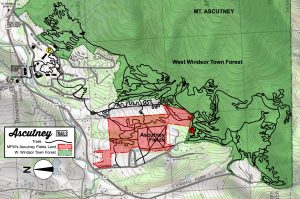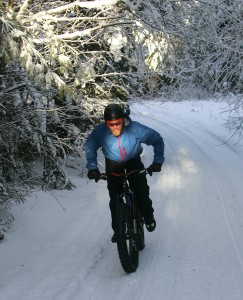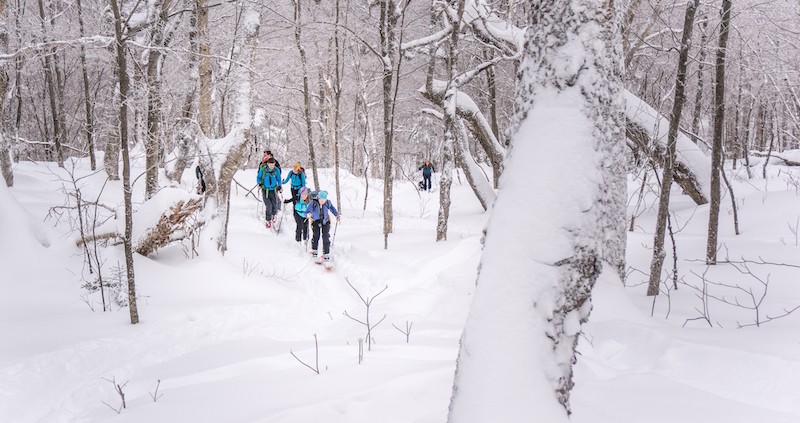Public Access vs. Private Land
On December 16, Dan Purjes sent a letter to the town of West Windsor, Vt. that in 30 days his company, MFW, would be revoking use of 104 acres of land that have been key to the rebirth of Mount Ascutney’s trail system. It was a little like giving a kid coal for Christmas—or, more accurately, taking away last year’s gifts.

For the past six years, the town, the Sports Trails of the Ascutney Basin, the Trust for Public Land and others have worked hard to revitalize the Mount Ascutney land that was part of the MFW-owned ski resort that closed in 2010 (see “Comeback Mountain”). They built trails, put in signs and, this season, launched a rope tow. The 104 acres were home to 5 miles of some of the best beginner trails for fat biking and mountain biking.
Purjes noted, as reported by The Vermont Standard, that he would be open to renegotiating the lease if there was some tax incentive. At present, no such incentive exists at the state level. Vermont has a long history of private landowners graciously opening their property and trails to the public for mountain biking, hiking, snowmobiling, hunting and other outdoor recreation.
The best example of this is, perhaps, the 100 miles of Kingdom Trails that crisscross the properties of 55 landowners in the Northeast Kingdom. In turn, mountain bikers alone contribute more than $6.5 million a year to the local economy.

Is it time, as Kingdom Trails executive director writes in the Jan./Feb. 2o17 issue of Vermont Sports, for Vermont to give tax breaks for private land that’s kept open for recreation, the same way it does for logging or agriculture in the “Current Use” program?
In support of that concept, Tierney cites the new study produced by a coalition of outdoor recreation partners (see “What’s a Trail Really Worth?”) including the Catamount Trail Association, the Kingdom Trails, the Green Mountain Club and the Vermont All-Terrain Sportsman Association (VASA). The study showed that annually
a) Trail users spend more than $9 million on lodging, food and beverages.
b) The trail systems help support 365 jobs.
c) The networks generate more than $2.2 million in tax revenues.
d) The total value to the state (as gauged by this limited study with out-of-state users of just four trail systems) is $30 million.
This gives us just a tiny glimpse of the importance of trails and outdoor recreation to the Vermont economy. But is that reason enough to give private landowners a tax break if they open their property? If you consider that more than 80 percent of Vermont forestland is privately owned and thus vulnerable to land sales or the whims of a landowner, the answer might be “yes.”
But, by the same token, if all landowners who allowed a trail to cross their back 40 (or 20 or 10) were to get tax breaks, it could impact the state’s coffers and its ability to fund new trails, parks and other recreation.
There’s no easy answer except to hope that Vermonters continue to maintain and respect the neighborly, open-borders ethic that has made recreation here what it is and helped build a strong community of athletes and outdoorsmen and women.
That’s the Vermont way.
As for Ascutney’s trails? “We knew this might happen, but it did take us by surprise,” said Michael Bell, STAB’s executive director. He also added: “We’re Vermonters. We’ll adapt.”

